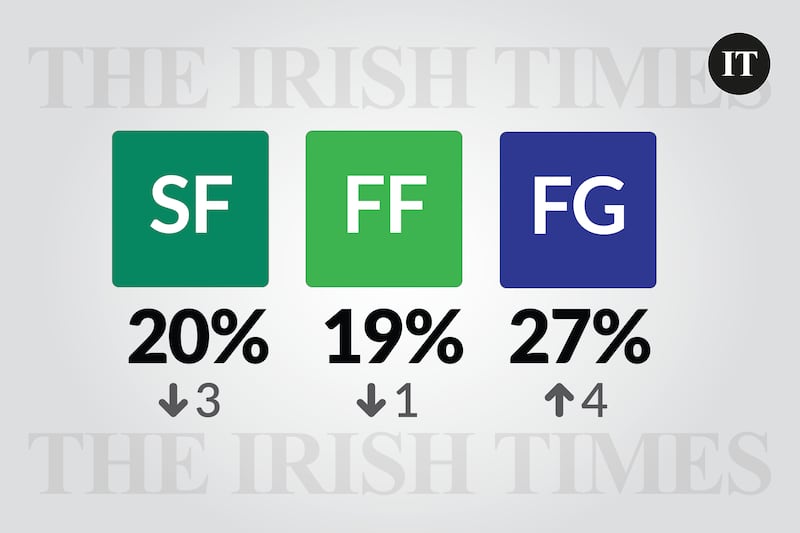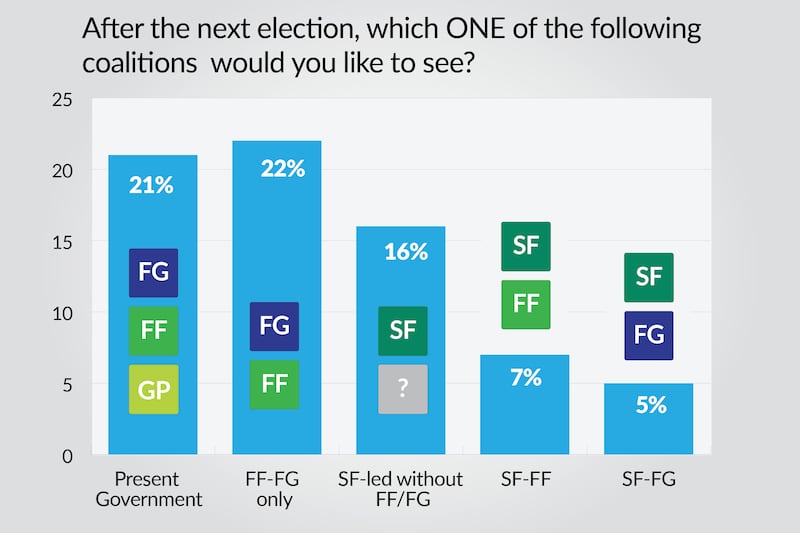Sinn Féin has a Goldilocks problem. Its timing with the electorate is never quite right. After polling well in the lead-up to the 2019 European and local elections, the party’s vote slumped. It lost a third of its local authority seats and returned only one MEP.
At the time, the postmortems centred on the three themes: Mary Lou McDonald’s “unsure” stewardship; the party’s poor organisation at local level; and the then government’s strong performance on Brexit. McDonald accepted responsibility for the result, telling reporters: “The buck stops with me.”
Battered and bruised by the encounter, the party fielded too few candidates in the general election the following year and failed to capitalise on a large upswing in support. Despite winning the largest share of first-preference votes (24.5 per cent) and smashing the Civil War duopoly that had dominated Irish politics since the foundation of the State, it returned fewer seats than Fianna Fáil. In several constituencies the party’s first-preference vote would have been enough to carry two candidates across the line but it had only fielded one.
Despite failing to manage its vote, Sinn Féin could take heart from the fact it was now the largest party in the State and back in the driving seat. The poor performance in 2019 was dismissed as an aberration and questions about McDonald’s leadership evaporated.
Sinn Féin’s path to power was boosted when Fine Gael and Fianna Fáil entered a grand coalition, leaving it as the main opposition. Typically when the two previously dominant incumbents coalesce on one side of the political spectrum, the two-party system fractures.
With the Government on the run over housing, Sinn Féin’s trump card politically, its standing in the polls soared. By the end of 2020, eight months into the current Government’s tenure in office, Sinn Féin’s core support had risen to 29 per cent, according to an Irish Times/Ipsos opinion poll. By the end of the following year, it had increased to 35 per cent, with Fine Gael and Fianna Fáil trailing on 20 per cent each.
Support (in terms of Irish Times/Ipsos polls) hit a high of 36 per cent in July 2022. It put Sinn Féin 16 points ahead of Fine Gael. The only question was whether it could win enough seats to govern on its own or whether would it need a partner. The natural arithmetic pointed to a Sinn Féin/Fianna Fáil alliance. Speculation was rife over whether Fianna Fáil leader Micheál Martin would drop his long-standing objection to such a mash-up.
From that point, Sinn Féin’s seemingly smooth flight path into government collided head-on with immigration. The arrival of more than 100,000 Ukrainian refugees in 2022 and 2023 has changed the political climate, triggering violent protests and a spate of sinister arson attacks.
It has also shifted the zone of anti-establishment politics away from Sinn Féin, placing it partly with newly formed community action groups, some with legitimate grievances, and partly with nefarious underground groups and individuals, some with the intent of spreading disinformation and ratcheting up tensions.
International precedent tells us that the arrival of anti-immigrant politics, assuming no big policy shifts on the part of incumbents, does two things: it reduces support for the traditional left while bolstering support for parties perceived to be on the right.
The latest Irish Times/Ipsos poll appears to bear this out.
It puts Fine Gael on a resurgent 27 per cent of the vote (up four points since early summer), ahead of Sinn Féin on 20 per cent (down three) and Fianna Fáil on 19 per cent. The result is Fine Gael’s highest since June 2021, and the lowest for Sinn Féin since the 2020 general election. It was Sinn Féin’s fourth consecutive slide in the polls.


Ireland, like many other western countries, is in the grip of a backlash against immigration and Sinn Féin’s middle-ground stance on the issue is at odds with a significant portion of its traditional voter base. In response to another poor showing in the local and European elections in June (this time it fielded too many candidates), the party shifted its position on immigration, pledging to end the State’s “two-tier system” in which Ukrainians enjoy better conditions than asylum seekers from other countries.
Its new policy platform would also require an audit of local services such as health, housing, transport and education to be completed before any accommodation centre for asylum seekers is located in a community, with local people allowed to make submissions on the proposals.
There was, however, no big divergence from Government immigration policy, which has also been hardening in the face of protests, and that leaves Sinn Féin in much the same position. Pivoting further to the right to recapture traditional working-class voters angered by Government policy on immigration could alienate newer, younger middle-class voters, who see Sinn Féin as an answer to their housing woes.
Hence the party finds itself in an awkward bind on immigration and on the eve of what was meant to be its breakthrough election.
- Sign up for Business push alerts and have the best news, analysis and comment delivered directly to your phone
- Find The Irish Times on WhatsApp and stay up to date
- Our Inside Business podcast is published weekly – Find the latest episode here















